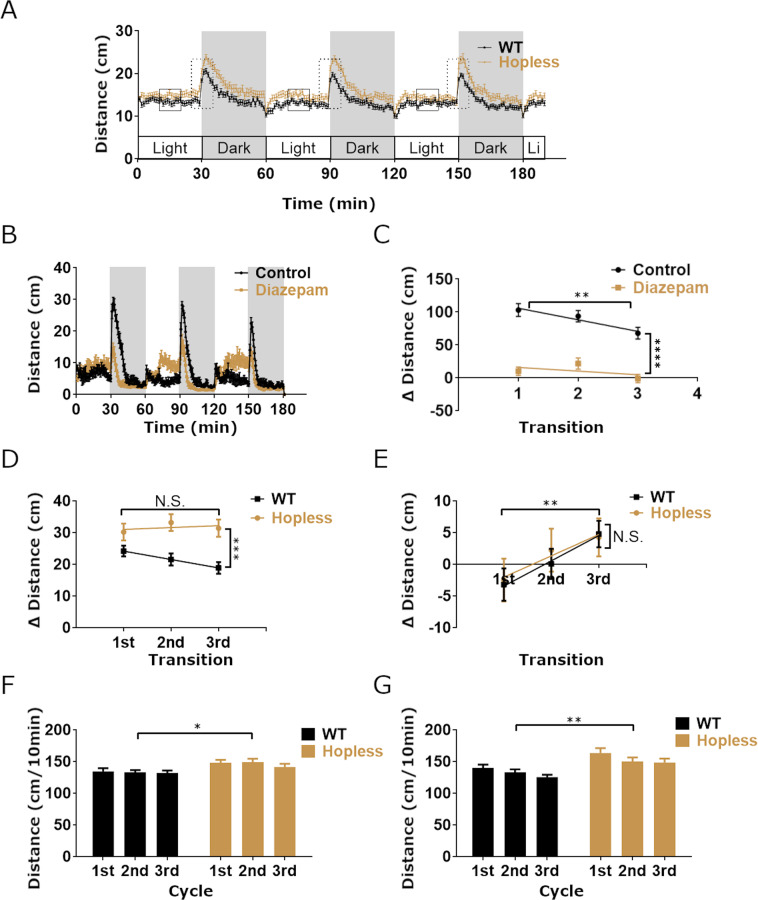Figure 3.
Hopless larvae display impaired stress-related behavior in light-dark transitions assay. Mean total locomotor activity of 6 dpf wild type (WT; n = 48) and hopless mutant (n = 41) larvae was measured during 3 h of 30 min alternating light-dark cycles (A). Mean total activity of each genotype was calculated for the middle 10 min interval of each phase (black squares in A) or as the difference in total activity between 5 min post-transition and 5 min pre-transition (dashed rectangles in A). WT larvae (n = 24) that were treated with 5 µM diazepam displayed similar activity pattern to non-treated siblings (n = 24; B); yet, treated larvae displayed reduced dark-enhanced activity (C). Analysis of larval activity during light-to-dark transitions, calculated as the delta of the total distance swum 5 min post-transition to 5 min pre-transition, revealed that WT larvae gradually decreased their dark-enhanced activity with each cycle, representing habituation to the challenge, whereas hopless larvae failed to display such habituation (D). During the opposite dark-to-light transitions no differential responses between genotypes were observed (E). In general, hopless larvae exhibited significantly increased activity under both light and dark conditions (F and G, respectively). Data were analyzed using 2-way ANOVA. Single asterisks indicate p < 0.05; double asterisks indicate p < 0.01; triple asterisks indicate p < 0.001; quadruple asterisks indicate p < 0.0001. No significant interaction was found for time*genotype.

